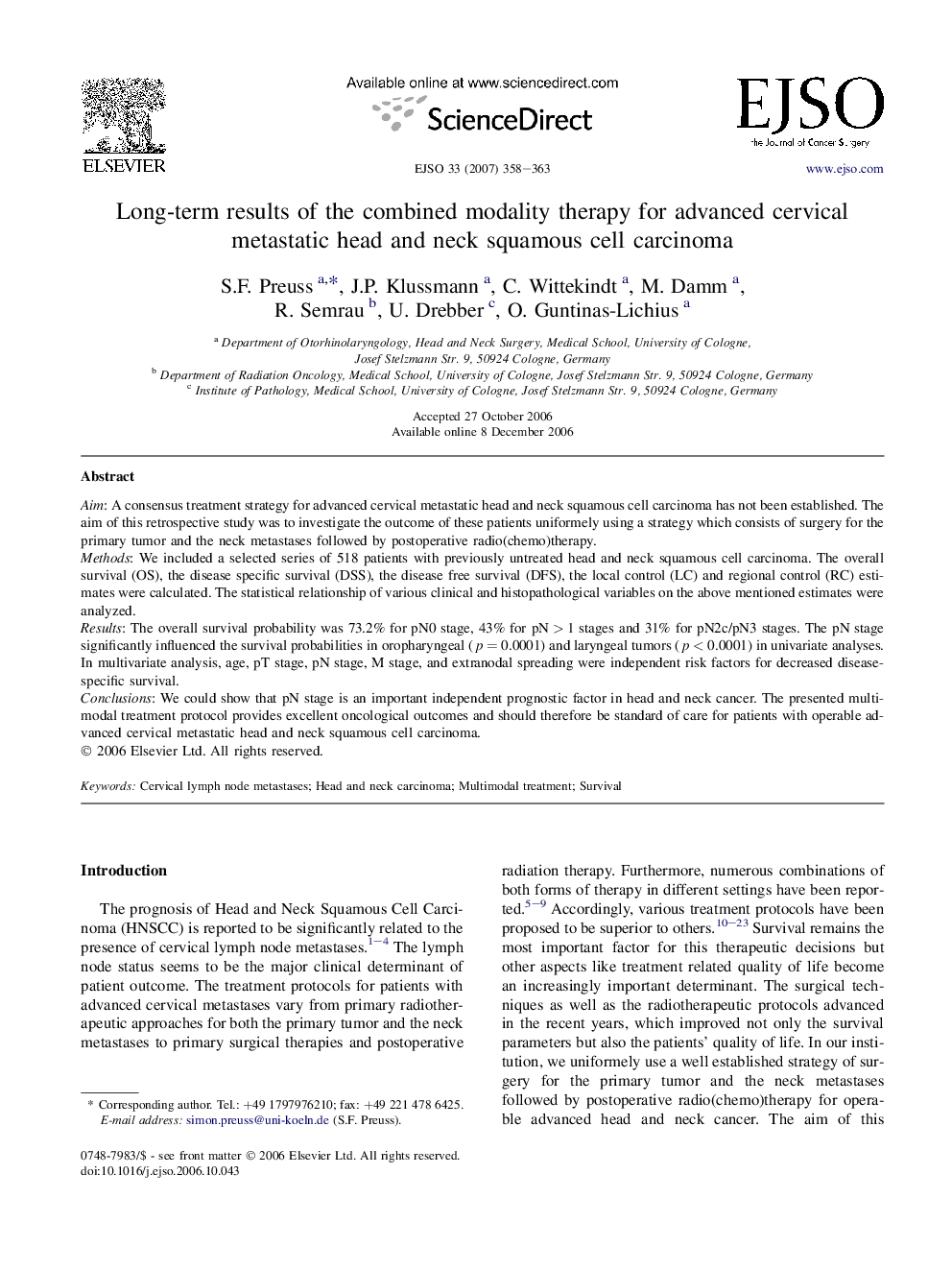| Article ID | Journal | Published Year | Pages | File Type |
|---|---|---|---|---|
| 3987741 | European Journal of Surgical Oncology (EJSO) | 2007 | 6 Pages |
AimA consensus treatment strategy for advanced cervical metastatic head and neck squamous cell carcinoma has not been established. The aim of this retrospective study was to investigate the outcome of these patients uniformely using a strategy which consists of surgery for the primary tumor and the neck metastases followed by postoperative radio(chemo)therapy.MethodsWe included a selected series of 518 patients with previously untreated head and neck squamous cell carcinoma. The overall survival (OS), the disease specific survival (DSS), the disease free survival (DFS), the local control (LC) and regional control (RC) estimates were calculated. The statistical relationship of various clinical and histopathological variables on the above mentioned estimates were analyzed.ResultsThe overall survival probability was 73.2% for pN0 stage, 43% for pN > 1 stages and 31% for pN2c/pN3 stages. The pN stage significantly influenced the survival probabilities in oropharyngeal (p = 0.0001) and laryngeal tumors (p < 0.0001) in univariate analyses. In multivariate analysis, age, pT stage, pN stage, M stage, and extranodal spreading were independent risk factors for decreased disease-specific survival.ConclusionsWe could show that pN stage is an important independent prognostic factor in head and neck cancer. The presented multimodal treatment protocol provides excellent oncological outcomes and should therefore be standard of care for patients with operable advanced cervical metastatic head and neck squamous cell carcinoma.
